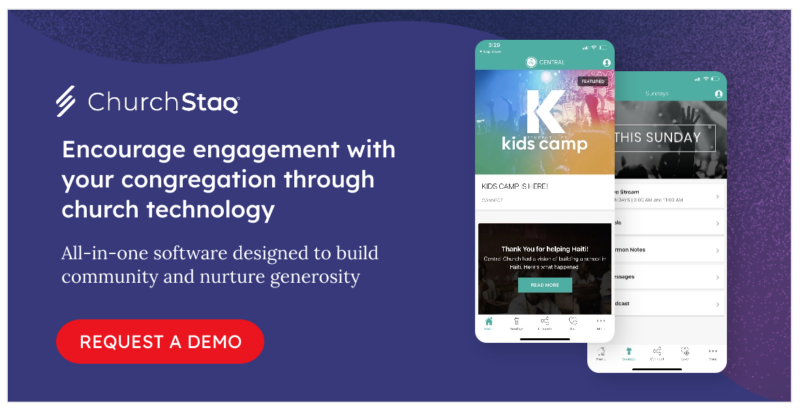How to Write a Giving Thank You Email at Your Church
Updated May 13, 2024 |
Sending out a giving thank you email isn’t just polite, it’s an important giving tool your ministry can use to restate your message, show appreciation, and highlight the next steps to engage with your ministry. But the thing is, not all giving thank you emails are created equally.
Like all thank you notes, it’s important to include a few key elements to make your donors feel appreciated, inspired, and empowered to do and give more. Here are a few steps you can take to really make your thank you notes shine.
First, focus on the giver
A giving thank you note should be all about the give — what they did, how their donation made a difference to your organization, and without their support you would simply be unable to execute on your mission. Organizations cannot emphasize enough the importance of community support. This is why you should highlight how meaningful their support is throughout your entire giving thank you note.
Communicate the results of the gift
Next, make sure you communicate the results of their gift. Did they help feed a family? Was their donation what made it possible for a new roof? Were you able to buy new toys for the children’s ministry? Don’t be afraid to share your numbers or the success that the money has or will help you build/do/support in the future. Specificity helps connect givers to the causes they care about. A generic generalized thank you note has much less of an impact than a note that communicates exactly how a giver helped your organization transform a life.
Tell a story with your letter
Give your donors a compelling story to rally behind—and tell it well. A narrative is easier for people to remember than a page full of data and facts. Plus, a story keeps inspiring more generosity into the future. Take something relatively boring, like redoing the roof, and tell a story about how the dripping into the children’s daycare center is fixed and now the children have a warm and dry place to play and learn about Jesus. By reframing their donation as a story and focusing on how the giver’s generosity helped your community you have a much more powerful thank you note.
Include high-res photos
When putting together your thank you notes, be sure to include high-quality photos. Smiling children, cute animals, a community coming together to build a new house—whatever it is, make sure you have photos that support it. People will read the words if the photo is compelling enough, but they will most likely remember the photo and not the words at the end of the day. According to research: “The imagery of one person is stronger than a group of people, and a person or group is stronger than charts, graphs, or infographics.” While getting the right photos takes a bit of forethought, you can make sure to include photography in your thanking strategy moving forward.
Highlight a logical next step
Once you have written the majority of your thank you note, be sure to include a link or a way for givers to continue reading. It’s important to note that the link should not go to your donation page. This link is not another ask, but rather another way for givers to keep engaging if they so choose. You can offer them to follow along your social profiles or sign up for your newsletter if they are interested in learning more. You can include this at the end of your letter before the signature, or as a “P.S.” to show that it’s separate from the thank you. By offering a way for givers to continue to engage, you open up the possibility to deepen the relationship within your community.
Sign it right
Finally, be sure to use the signature of someone important. Thank you notes are an opportunity for givers to be recognized, and there’s nothing more special than being personally thanked by someone who leads your ministry. This shows your community that their generosity is meaningful and important.
For more best practices on using emails to engage with your congregation, check out the free ebook, the 7 Deadly Sends of Church Email Marketing, today!
Featured Content
You May Also Like

